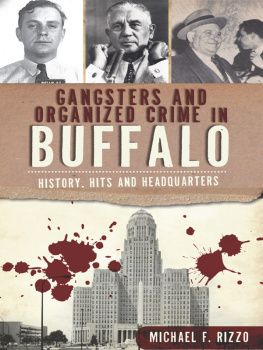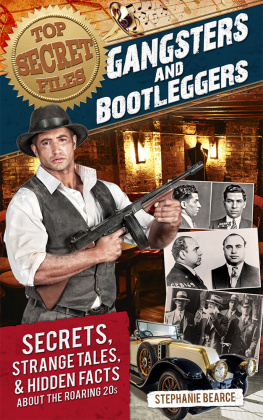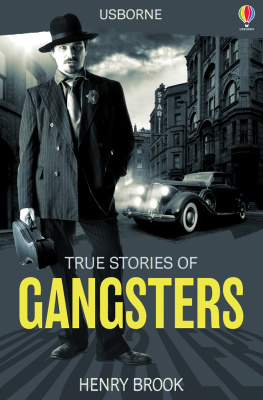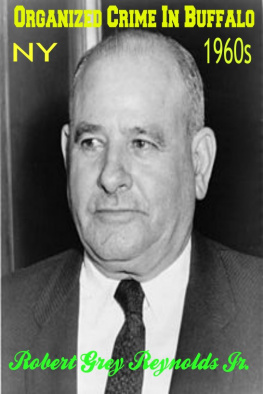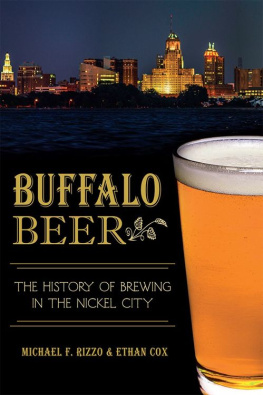

Published by The History Press
Charleston, SC 29403
www.historypress.net
Copyright 2012 by Michael F. Rizzo
All rights reserved
Front cover: top, left to right: private collection, authors collection, New York Daily News; bottom:
Library of Congress.
First published 2012
e-book edition 2012
ISBN 978.1.61423.549.1
print ISBN 978.1.60949.564.0
Library of Congress CIP data applied for.
Notice: The information in this book is true and complete to the best of our knowledge. It is offered without guarantee on the part of the author or The History Press. The author and The History Press disclaim all liability in connection with the use of this book.
All rights reserved. No part of this book may be reproduced or transmitted in any form whatsoever without prior written permission from the publisher except in the case of brief quotations embodied in critical articles and reviews.
This book is dedicated to two Gerlandos in my life. First, my son, for missing time with me while I wrote this, and second, my grandfather, who left Sicily to escape the Mafia.
CONTENTS
PREFACE
The idea for this book started sometime in the early 2000s. I vaguely recall an old girlfriend telling me that she was somehow related to Stefano Magaddino, the grand old mob boss of western New York, and that there was a book about him. So I decided to look for it. I checked the library and scoured the Internet but found nothing. Not a single book written about the Buffalo Mafia. So I decided Id write it.
I began gathering newspaper articles from microfilm and looking through scrapbooks in the library. Along the way, I stumbled across information about all these 1920s gangsters, mainly of Polish descent, and copied those too. As life would have it, I wasnt ready to write the Mafia book. Everything went aside, and I worked on another project.
Eventually, I made my way back. In 2007, I sold my delivery business and wanted to get involved in something else. My wife and I decided we would start a tour business based on Niagara Falls mob spots, and the Mob Tours was born. Unfortunately, Niagara Falls wasnt quite ready for a bus tour of crime sights, and two years later, we added walking tours in Buffalo.
Along the way, we accumulated over three hundred Mafia books, hundreds more articles, thousands of pages of Federal Bureau of Investigation (FBI) documents and even the complete court file from the Magaddinos 1968 arrests after traveling to New York City. We searched deed and business records, historical and library files and more, all to get the most accurate picture of this history and the people involved. At least a dozen people were contacted, including former FBI agents. Many had already passed away, but some were still alive, although I found, even in retirement, that they are not at liberty to discuss past cases.
In late 2011, I sent a proposal for this book to The History Press, and they were interested, as it was similar to other books they had done. Now all I had to do was take the thousands of pages of information and put together a bookin less than six months.
I need to thank quite a few people who were very helpful in putting this book together. Thanks go out to: Lieutenant Mike Kaska of the Buffalo Police Department, who has a great website of Buffalo police and crime history; Sharon Ippolito Manning, Jimmy Manganello and Joe DiCarlos granddaughter for sharing family photos; the countless folks who have provided insight into the lives of some of the people found in this book; Michael Tona for his wealth of knowledge on the Buffalo Mafia; Daniel DiLandro, college archivist and Special Collections librarian at Buffalo State College; Jon Black from gangrule.com and the Cheektowaga Historical Society for use of their photos; the amazing website fultonhistory.org, a treasure-trove of newspaper articles and a huge help in searching old stories; Ron Fino for his insight and correcting some history; former Buffalo News reporter Anthony Cardinale for his photo; Harvey Garrett for leading me to some other photos; and Edward J. Dombkiewicz for clearing up some family history.
Also thanks to one of my oldest friends, Gilbert Neal. He is a fantastic musician, and can be found at www.gilbertneal.com.
And, as always, thank you to my wonderful wife, Michelle, and my son, who saw little of me for several months while I put this book to bed.
Many of the stories you are about to read involve violent and deadly criminal activities. Personally, I dont condone them; I am just piecing together history. Every major city in America has had its share of violent criminals, and their stories have been told, which is why I do this. It is history. I apologize if you see or read about a relative or friend, but once again, most of this was reported in newspapers, on television and in books and magazines, and a lot is on the Internet.
Finally, a woman named Meg Henderson Wade contacted me in 2009 to tell me she had dated Stefano Magaddinos grandson, also named Stefano, in Atlanta for over three years in the 1980s. When he told her his grandfather was the Don of Buffalo, she said, Oh, you mean his first name is Donald? She had never heard of the Godfather and was quite surprised when she did some research at the Atlanta library and found out the Don was actually Don Stefano.
I hope you enjoy reading the book as much as I did writing it.
PROLOGUE
Never call nobody from your house! Listen here! No use a your name on the telephone. Were in hot water.
Stefano Magaddino, November 8, 1962
Gangster. Just reading the word, you probably have a picture in your head. The typical image of a well-dressed man in a suit and hat is the obvious thought. The definition of a gangster is simply a criminal who is a member of a gang. Some gangs are considered to be part of organized crime, and gangsters are also called mobsters.
From the 1920s through the 1930s, the gangster developed into a persona that most people recognize todayJohn Dillinger, Al Capone and so on. They all had monikers, either given by the police or the press: Baby Face, Pretty Boy, Millionaire Kid. At the same time, Hollywood helped to shape what a typical gangster would look like. The late 1920s saw several gangster films released, and in 1930, one of the biggest, Little Caesar, starring Edward G. Robinson, created a character that people recognize: the fame, respectability and wealth, the rise in power and eventual downfall.
In 1972, another film changed how the world perceived mobsters and how mobsters saw themselves. The Godfather, with its star-studded cast, made the life of a mobster seem glamorous and dangerous. Mafioso watched it and started to imitate the movie. The kissing of the Godfathers ring was not something that happened in real life prior to the movie, but mobsters and the wannabes around them all fawned over the movie.
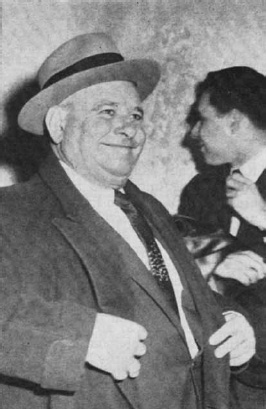
There are few photos of Stefano Magaddino available, and this is a rare one of the smiling Mafia leader. He looks like he could be anyones grandpa. Courtesy New York Daily News.
In western New York, the pattern of gangsters and mobsters was similar to the national scene. During most of the 1920s and 1930s, criminals certainly fell into the gangster category, and although this is a gangster guide, suffice it to say that many of the people in the book are nothing more than common criminals. Some definitely had Mafia ties, since the local boss Stefano Magaddino would never have let money slip through his hands without taking a cut.
Next page
